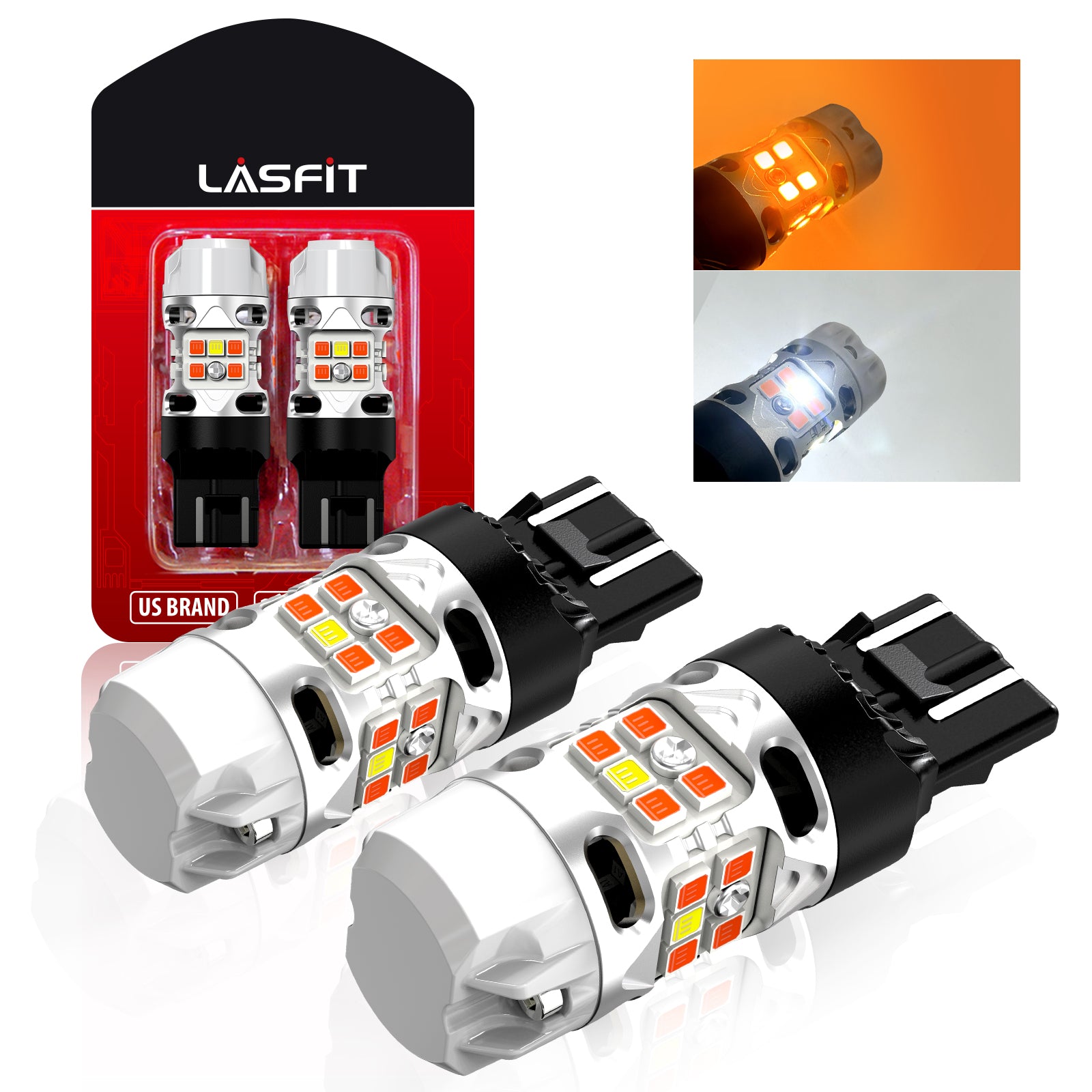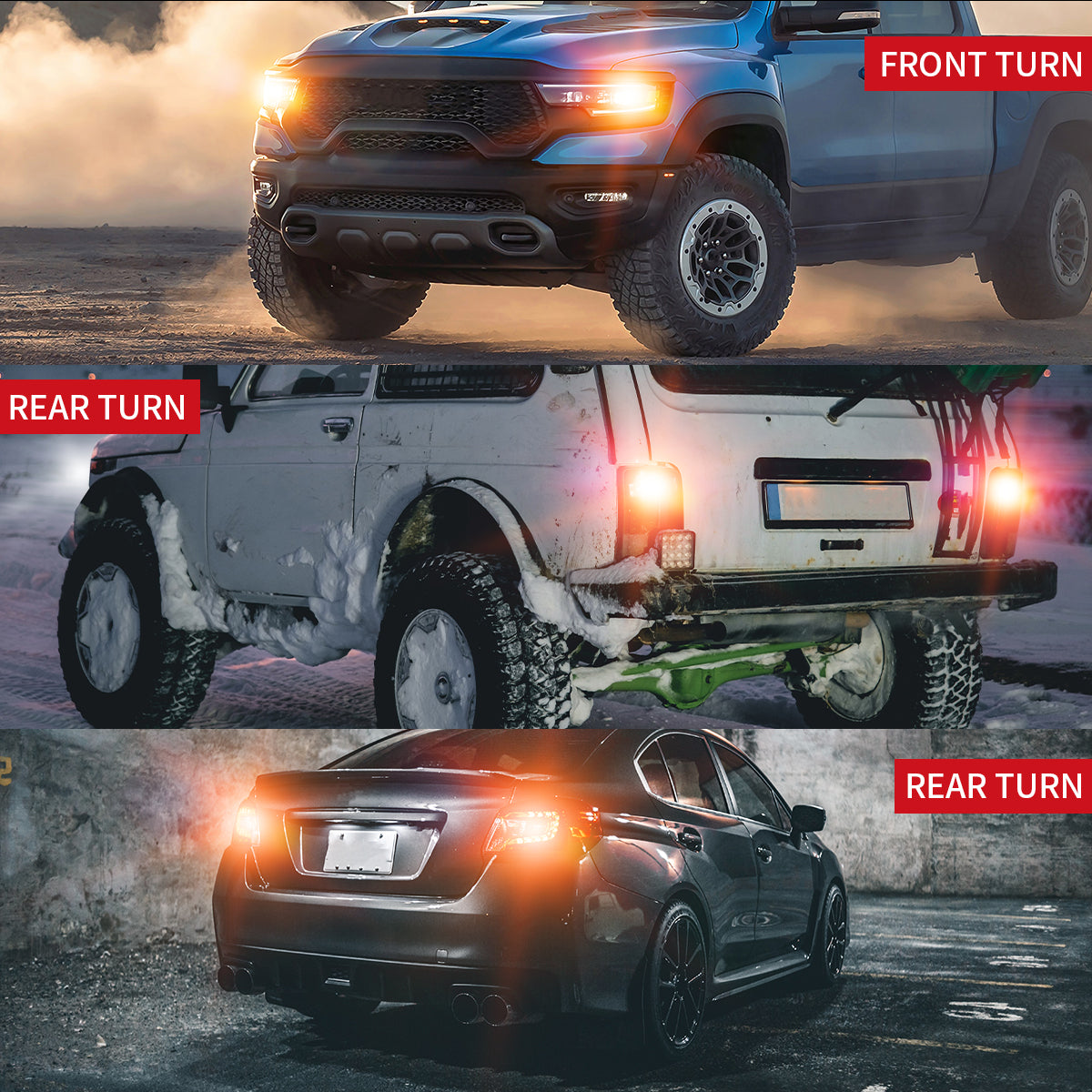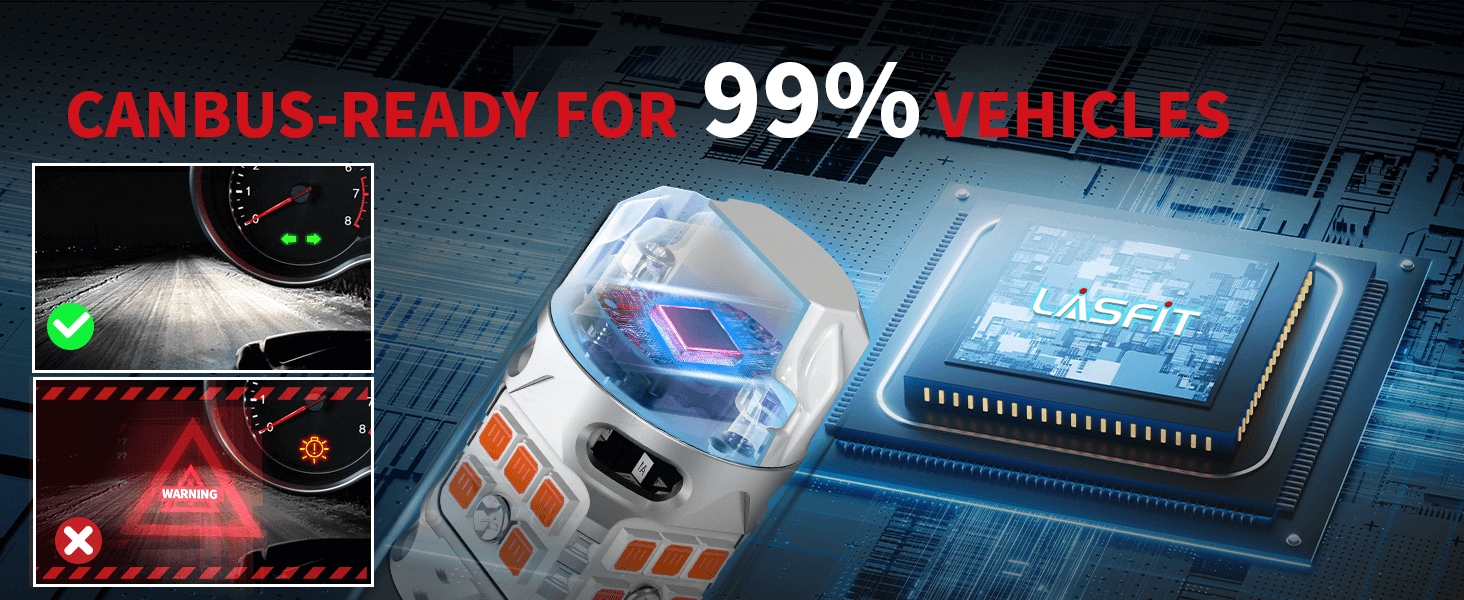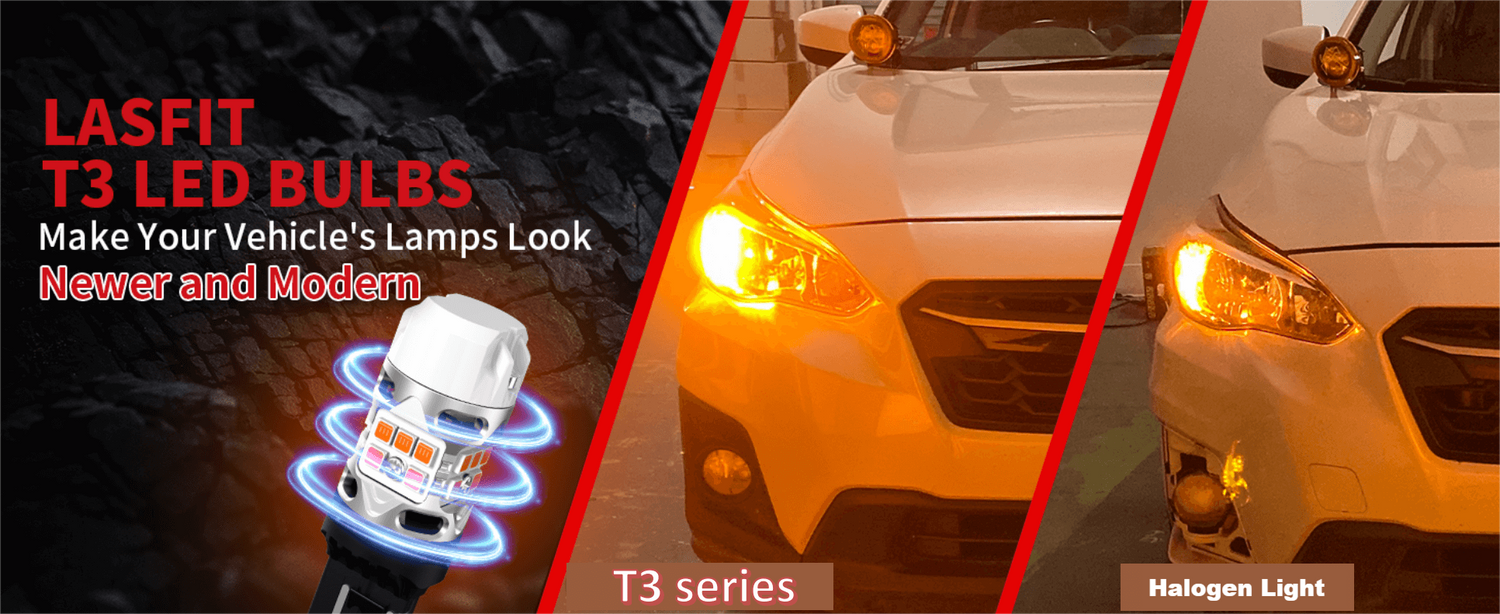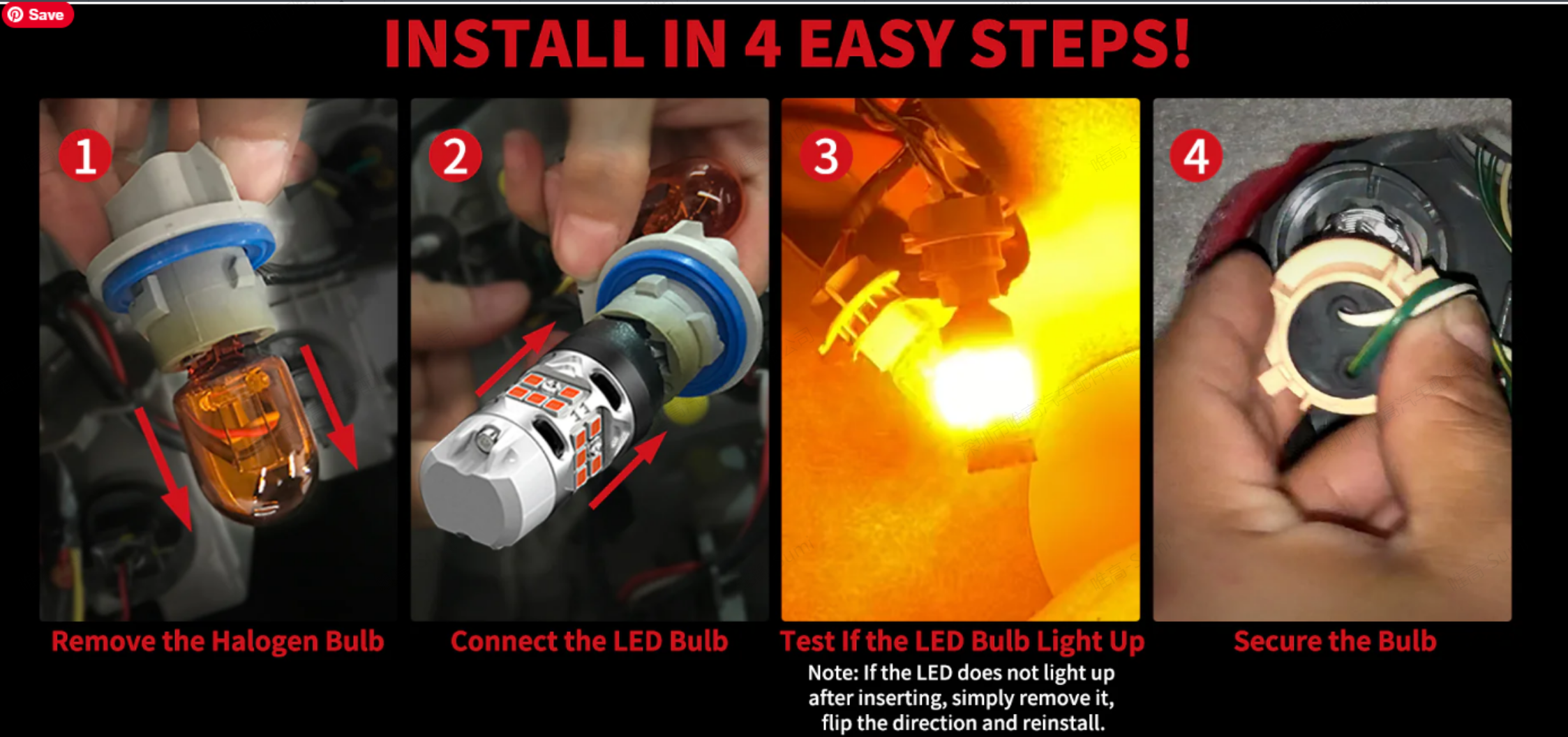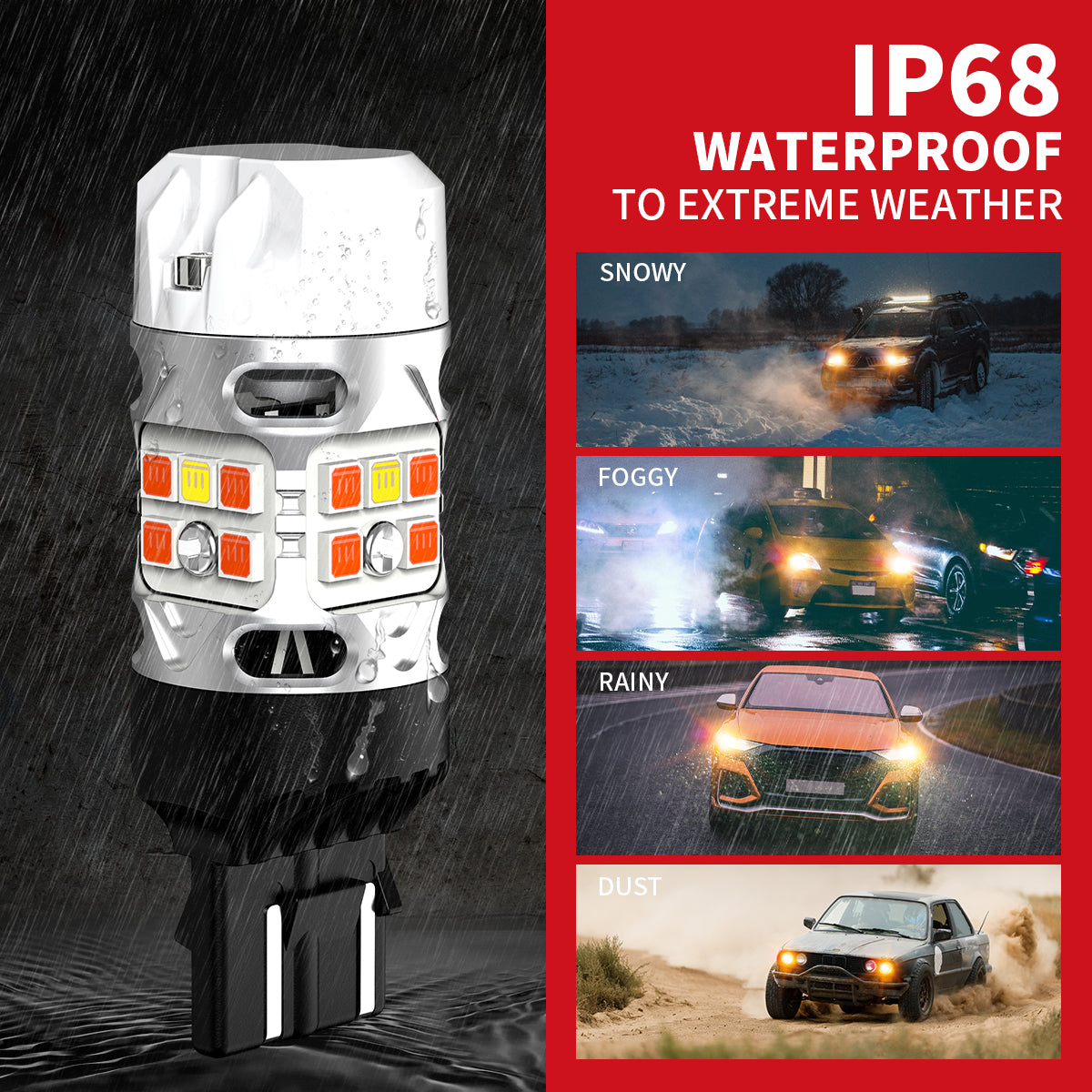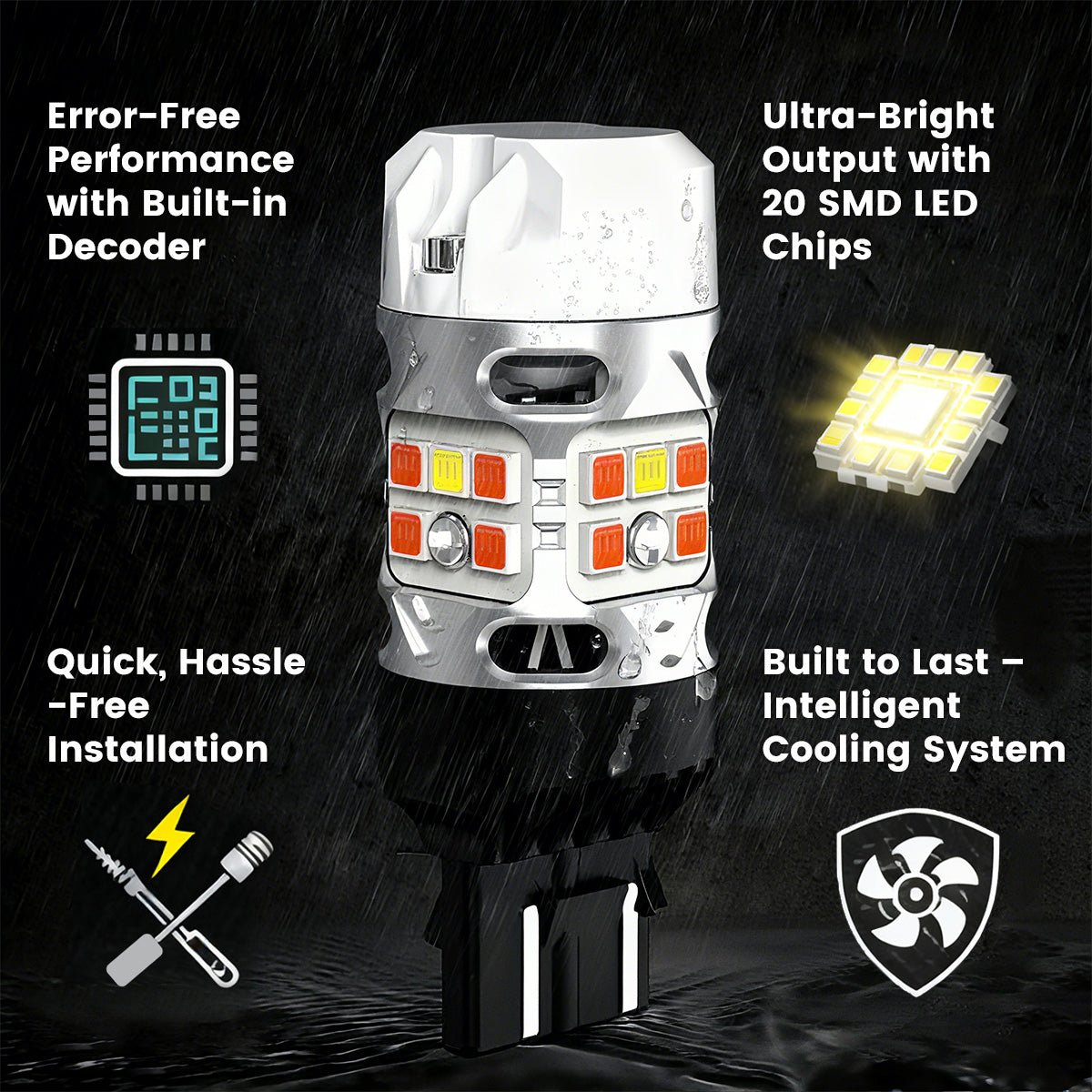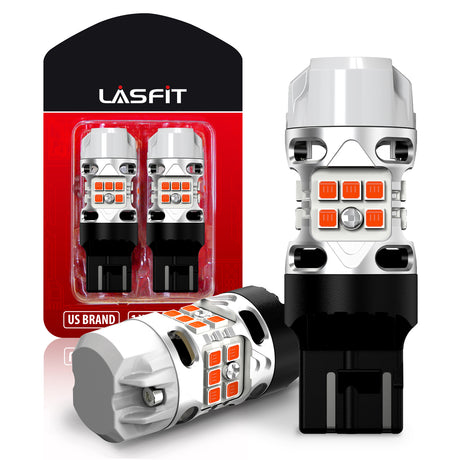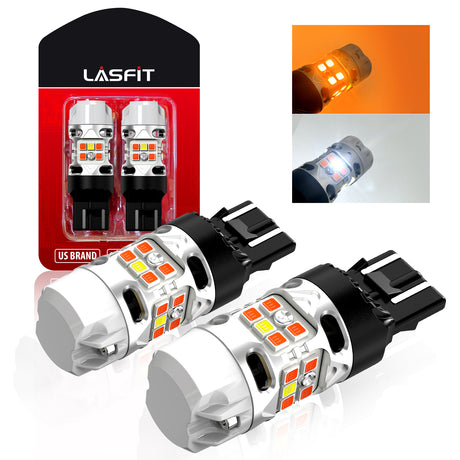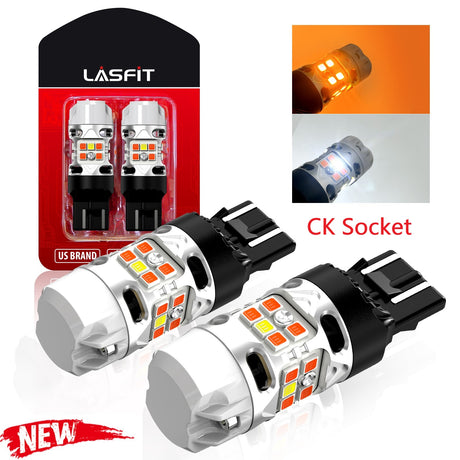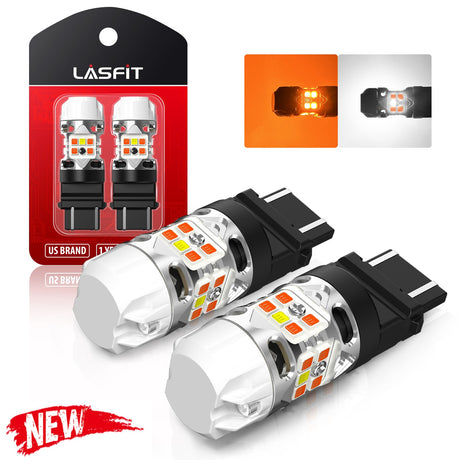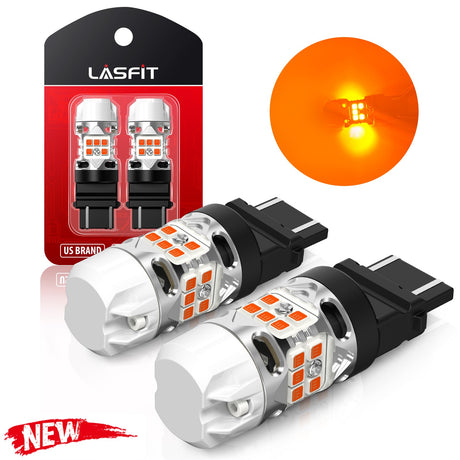On the internet, you’ll often see car owners discussing: "Is upgrading to LED turn signals really worth it?" "Which brand is the most reliable?" "Will I face error messages or flickering issues after installation?" These concerns are completely valid, as no one wants to spend money on unnecessary headaches.
The answer is simpler than you think—true value never comes from choosing the cheapest option, but from finding the perfect balance between performance, experience, and reliability. LED turn signals that boast "ultra-low prices" often come with hidden problems: compatibility issues, short lifespan, safety risks, and ultimately, more costs down the road.
Today, we’ll take Lasfit T3 integrated decoder LED turn signals as an example to analyze what truly constitutes a high-value choice. When you consider upgrading your car’s turn signals to LEDs, the wide range of prices can be overwhelming. As a budget-conscious car owner, you naturally want the best deal. But here’s the key to understand: value ≠ the lowest price. The real value formula should be: (excellent performance + hassle-free experience + long-term reliability) / price.
Cheap LED turn signals might seem like they save you a few bucks, but they could bring about flickering, system errors, and short lifespan, ultimately costing you more in time and money. So, how do you find the perfect balance of quality and value? After in-depth market research and user feedback analysis, we’ve found that Lasfit T3 integrated decoder turn signals achieve an exceptional balance between performance, price, and reliability, redefining what smart consumer decisions should look like.
Beyond the Price Tag: Why Smart Car Owners Focus on Total Cost of Ownership
“I initially chose a no-name brand LED turn signal to save $20, and it turned out to be my biggest mistake,” said James, a Ford owner from Texas, during our interview. “After installing it, the flickering problem appeared shortly after, and I had to spend more money on an additional decoder. After a few more frustrating attempts, I had no choice but to take it all out. If I had known, I would’ve gone with the Lasfit T3—it would’ve saved me time and money.”
This isn’t an isolated case—many car owners share the same conclusion. What seems like an affordable “low-price option” often ends up costing more in terms of time, maintenance, and potential risks. Over time, you not only waste money but also valuable time spent replacing and troubleshooting.
Smart car owners calculate Total Cost of Ownership (TCO). This includes the initial purchase price, installation time costs, potential problem-solving costs, and the long-term costs from the need for frequent replacements. When you consider it from this perspective, choosing a product like the Lasfit T3 is the truly cost-effective option.
LED Turn Signal Buying Guide: Four Key Factors Every First-Time Buyer Should Know
If you’re buying LED turn signals for the first time, the vast array of products on the market can be confusing with all the specs and gimmicks. These four key points will help you quickly determine which LED turn signals are truly worth your investment.
1.Decoder Function: Avoid Annoying Error Lights
One of the most common and frustrating issues with LED turn signal upgrades is the appearance of error lights on the dashboard, flickering signals, or turn signals that don’t work at all. Your vehicle’s computer monitors the electrical current in the circuit to determine if the turn signals are functioning properly. Traditional halogen bulbs draw a large current, while LEDs are more energy-efficient and draw much less power. When you replace halogen bulbs with LEDs, the vehicle’s computer detects a significant drop in current and mistakenly thinks the bulb is burned out. This triggers a fast-blinking warning signal.
This is why an integrated decoder (Canbus Decoder) is crucial when selecting LED turn signals. LED turn signals with an integrated decoder can simulate the normal current signature of halogen bulbs, allowing the vehicle’s computer to properly recognize their status and:
• Eliminate error messages and flickering issues
• Ensure the circuit signal remains stable without affecting the original car system
• Avoid the hassle of installing external resistors
2.Perfect Brightness: Safe, Not Blinding
Brightness is a key factor in evaluating LED turn signal performance, but “brighter” doesn’t always mean “safer.” A good LED turn signal should strike a balance between visibility and visual comfort—bright enough to be seen in various weather and lighting conditions, yet not too glaring to cause discomfort.
Daytime, rainy, or foggy environments: With strong ambient light and low contrast, traditional halogen signals can easily be obscured. In these conditions, an LED signal with adequate brightness and high penetration can alert other drivers early, improving safety.
Nighttime or low-light conditions: Excessive brightness or uneven beam patterns can cause glare, distracting oncoming or rearward vehicles, which creates potential risks.
Therefore, the ideal LED turn signal brightness should be "clearly visible in all environments without causing discomfort." High-quality LEDs achieve this through precise optical design and chip selection. Consumers should look for products that provide clear lumen ratings instead of vague descriptions and pay attention to whether the beam distribution is even and well-designed.
3.Ease of Installation: DIY-Friendly, Saves on Labor Costs
Complex installations can deter many car owners, leading them to pay for expensive professional installation. Some products may require additional adapters, connectors, or modifications to the original car sockets, which complicates the process and might even void the vehicle warranty.
A high-quality LED turn signal should prioritize user experience, making installation truly plug-and-play. You shouldn’t need to modify the original car wiring, special tools, or professional knowledge. Simply remove the old bulb and plug in the new one to complete the installation.
This simple design allows every car owner to upgrade their lighting quickly and enjoy the benefits of brighter, safer illumination.
4.Product Quality and Lifespan: A Reliable Long-Term Investment
Many low-priced LED turn signals use cheap materials and inefficient heat management systems to cut costs. This can lead to early failure of the LEDs or a rapid decline in brightness, and in some cases, can even affect the vehicle’s electrical system stability.
The key to evaluating LED bulb quality lies in its materials, heat management design, manufacturing process, and lifespan rating. High-quality products typically use aviation-grade aluminum, paired with efficient heat dissipation designs (like built-in heat sinks or micro-turbine fans), and provide clear lifespan data. These designs effectively dissipate heat, keeping the LED chips at optimal working temperatures, thus extending their lifespan.
Keep in mind that LED chips are extremely sensitive to temperature. If the heat dissipation design is inadequate, the accumulated heat can lead to:
• Accelerated light decay (brightness drops quickly)
• Color temperature shift (light turns yellow or becomes unstable)
• Significant reduction in lifespan
Heat management is often the most overlooked aspect of cheap LED lights. So when selecting an LED turn signal, focus on the materials and heat management design, as these factors often reveal the true quality and durability.
Why Lasfit T3 Offers Exceptional Value: Analyzing the Value Proposition
1.Experience Value: Integrated Decoder, No Extra Parts Needed
Lasfit T3’s decoder advantage: The T3 uses an integrated decoder chip that simulates the power characteristics of OEM halogen bulbs, preventing the vehicle's error system from triggering. Unlike many products that require separate decoders or are only partially compatible, the Lasfit T3 provides an all-in-one solution that solves error and flickering issues while maintaining the integrity of the original car functions and ensuring the new car warranty remains valid.
Notably, compared to the T series, which has a decoding time of 5-10 minutes, the T3 series now offers an extended decoding time of 30 minutes, making it more stable and resistant to interference. (In most real driving scenarios, turn signals rarely stay on for more than 30 minutes—whether during city commutes or long highway drives, frequent turns and lane changes rarely reach this duration.)
2.Performance Value: Just the Right Brightness, Enhanced Safety
Lasfit T3’s brightness philosophy: The T3 provides just the right brightness output through meticulous optical design and chip selection. Its light is bright enough to alert surrounding drivers in high-traffic areas during the day and provides reliable warnings in low-light conditions at night, while ensuring it’s not overly bright to avoid glare.
3.Ease of Installation: DIY-Friendly, Save on Labor
Lasfit T3’s installation advantage: Many car owners hesitate to upgrade because they fear complicated installations. Lasfit’s design has been optimized for DIY users, allowing you to complete the upgrade in four simple steps. This minimal design lets any car owner upgrade their lights as easily as changing a light bulb at home.
Installation Steps:
Step 1: Remove the original halogen bulb
Step 2: Connect the LED turn signal bulb
Step 3: Test if the LED bulb lights up properly
Step 4: Secure the bulb in place
4.Reliability Value: One-Time Investment, Long-Term Benefit
Lasfit T3’s quality guarantee: The T3 uses high-quality materials and heat management designs to ensure long-term durability and stability. Unlike cheap alternatives that need frequent replacements, T3 is a wise, one-time investment that pays off for years. Its superior heat management design effectively lowers the working temperature of the LED chips, extending their lifespan and preventing issues like premature light decay or failure due to overheating.
What’s more, Lasfit offers U.S.-based customer service and warranty support, so you can buy with peace of mind and enjoy reliable performance.
Conclusion: Smart Investment, Safe Driving
Upgrading to LED turn signals is a modification that significantly improves driving safety and vehicle aesthetics. However, choosing the wrong product can lead to a series of problems and extra costs. Lasfit T3 integrated decoder turn signals , with their ideal brightness, integrated decoder technology, easy installation, and exceptional reliability, offer the best value for money.
When you consider performance, experience, and reliability, the T3 is undoubtedly the smartest investment. It eliminates the guesswork and risks associated with LED turn signal upgrades, allowing you to enjoy all the benefits of LED technology without worrying about common issues and potential pitfalls.
Value doesn’t equal the cheapest price, but rather achieving the best solution for a reasonable cost. By this measure, Lasfit T3 provides exceptional value and is the smart choice for first-time LED turn signal buyers.
If you’re still unsure whether to upgrade your car’s turn signals to LEDs, Lasfit T3 offers the best solution:
✅ Integrated decoder, no error messages, no flickering
✅ Brighter, safer illumination
✅ Plug-and-play installation, super easy
✅ High-quality materials, longer lifespan
✅ Lowest long-term ownership costs
Lasfit T3 is not just a brighter bulb; it’s an "exceptional value" upgrade experience. Upgrade your car today with our T3 integrated decoder turn signals !
How to Purchase the Right Model for Your Car?
Simply visit Lasfit’s official website, enter your vehicle’s make and model year, and search for the correct bulb model that fits your car.
Please note: Lasfit’s matching results are based on the original OEM halogen bulb size.
• If your vehicle already comes with OEM LED turn signal bulbs, these bulbs will not fit.
• If you’ve installed aftermarket LED headlights, please double-check the turn signal bulb size before purchasing.

